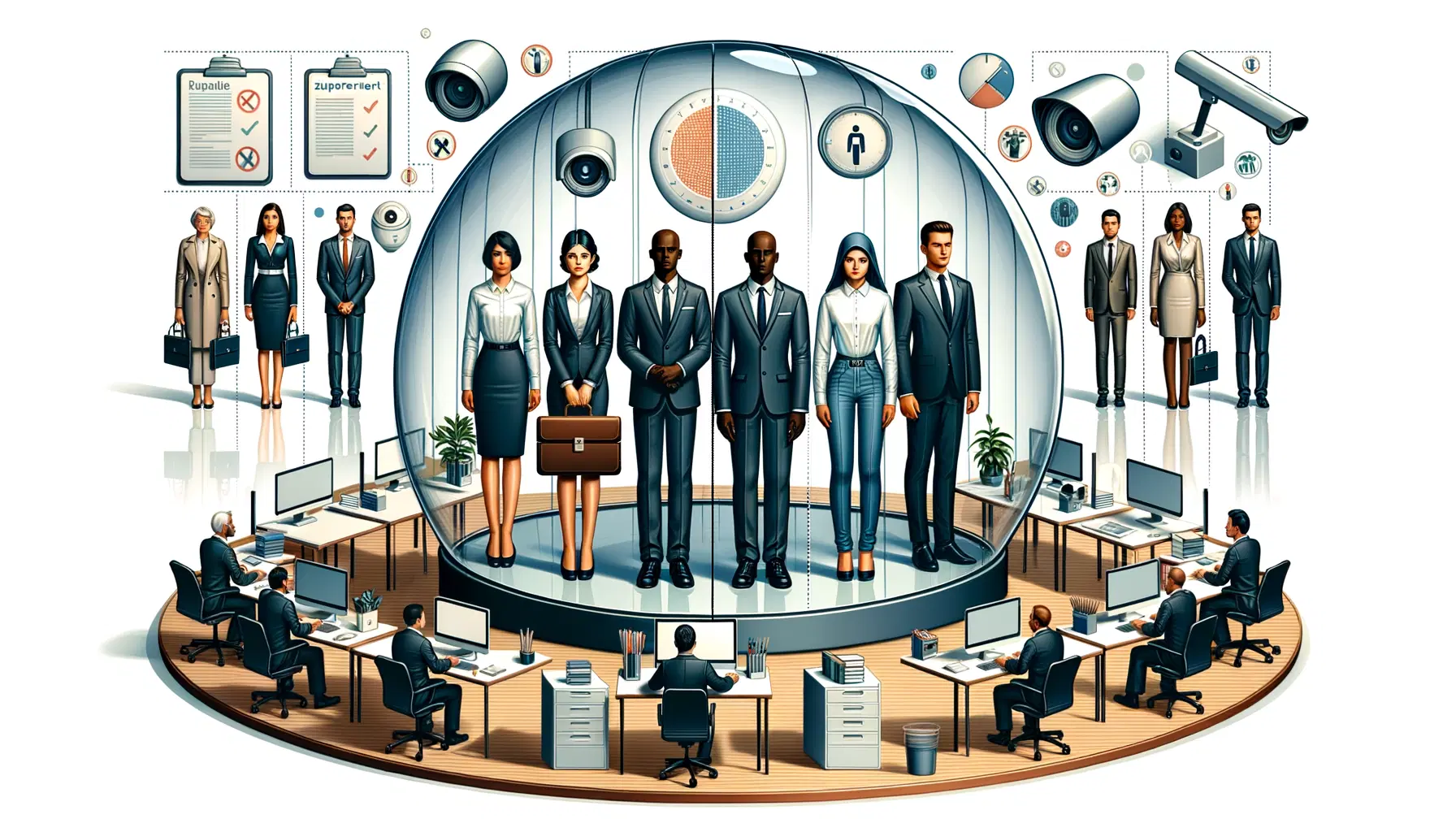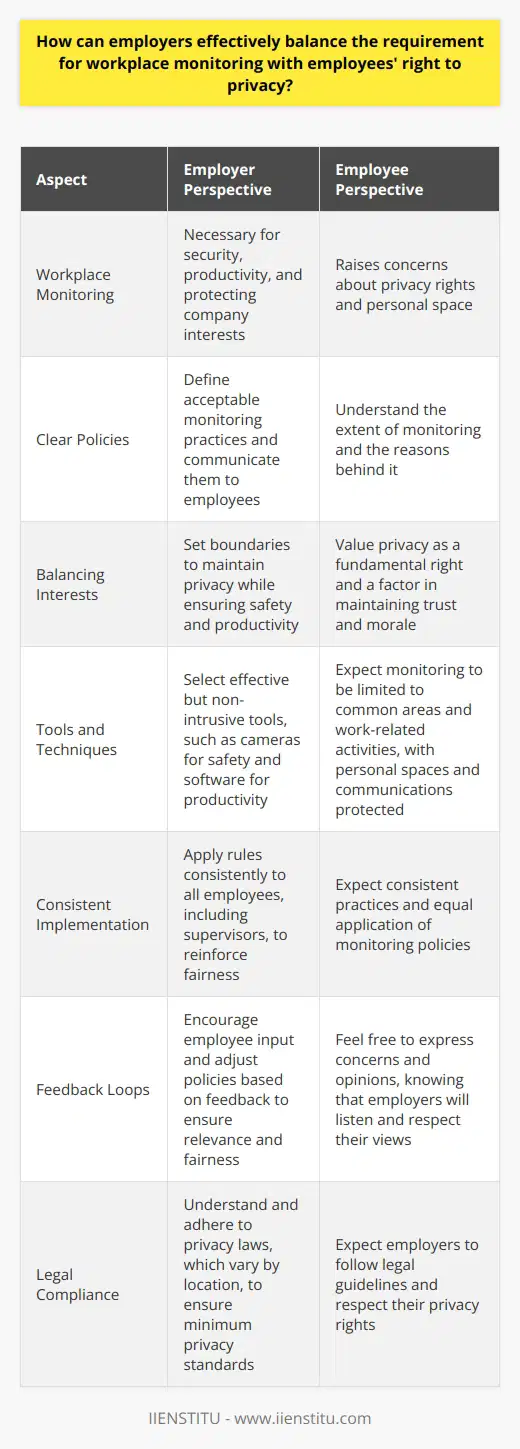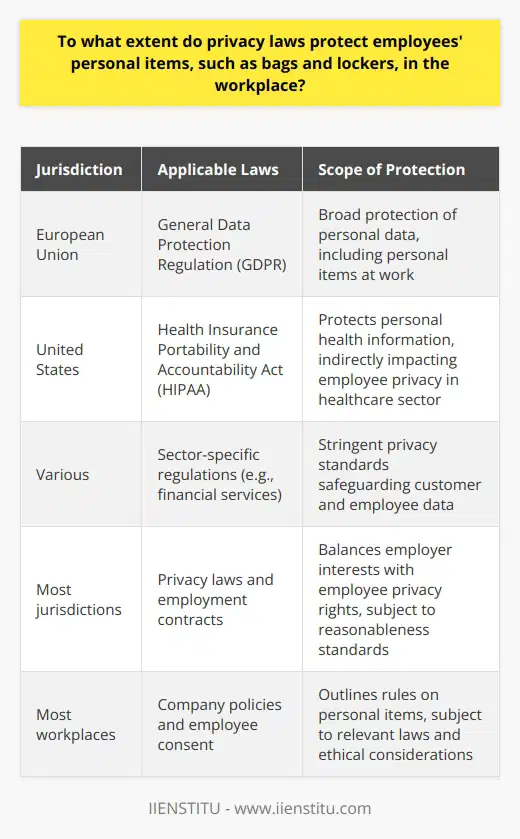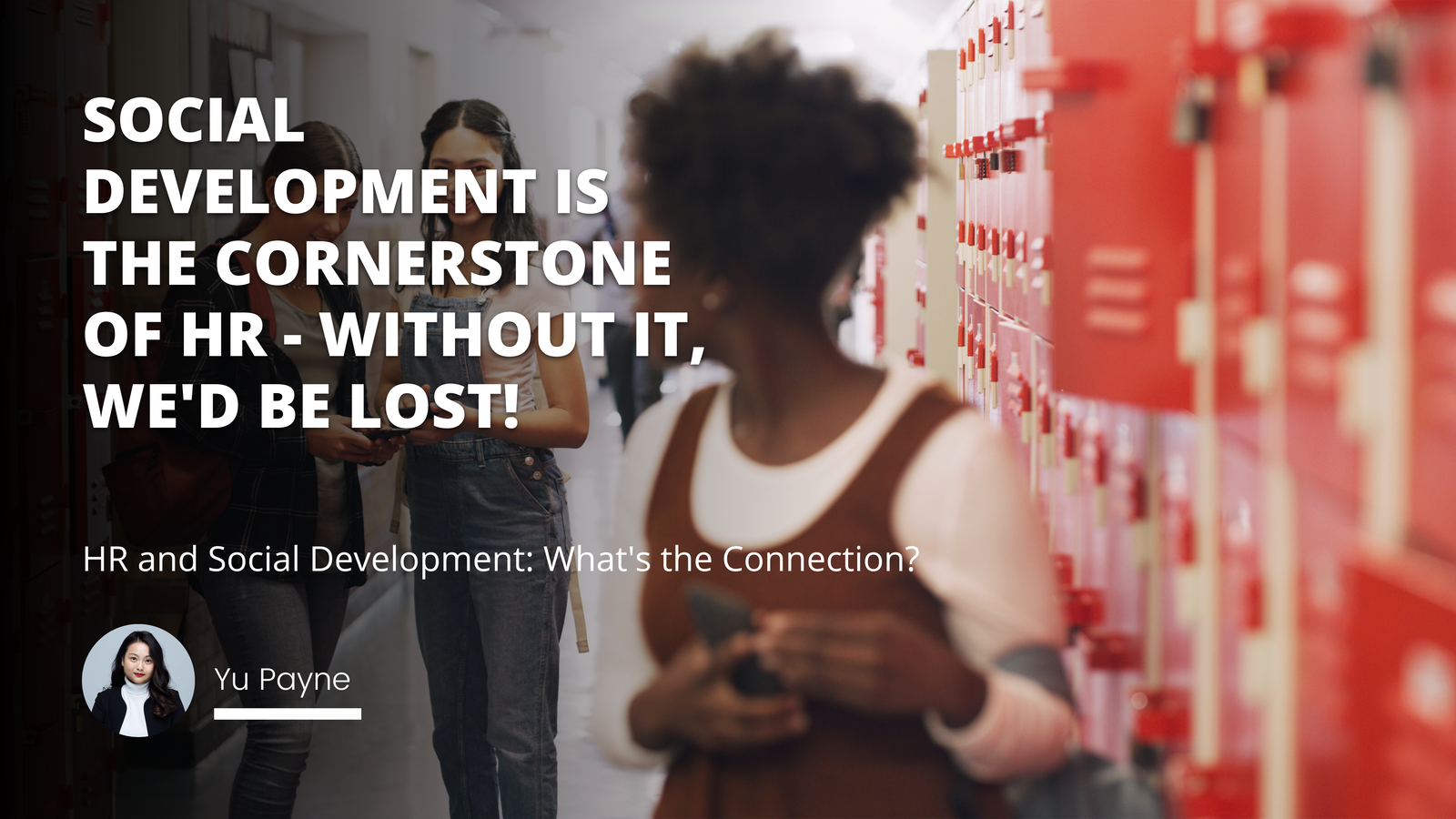
The modern workplace is a tapestry of interconnected personal and professional lives, each thread maintained by various degrees of privacy. In this blog, we shall delve into the intricate topic of employee privacy—a facet of the business world both delicate and essential. As businesses and technologies evolve, understanding and safeguarding employee privacy has become a significant focus for companies globally.
We'll discuss what it encompasses, why it's so crucial, and the policies that govern it. Throughout this piece, the goal is to provide comprehensive knowledge and an expert approach, enriched with examples that resonate authentically and resonate with our readers.
Understanding Employee Privacy
Definition of Employee Privacy: Employee privacy is a concept that extends well beyond the simplicity of personal space—it's about the protection of personal information, the right to autonomy over personal matters, and the respect of boundaries within the professional environment. It covers a range of aspects from conversation eavesdropping to the protection of digital communications and storage of personal data. Analyzing this term requires us to unpack various layers, such as personal privacy, information privacy, and the inherent legal implications.
Importance of Employee Privacy: In the professional sphere, privacy is not merely a comfort—it's a necessity. It fosters a sense of security among employees, empowering them to perform without apprehension of undue scrutiny. The absence of privacy protocols can result in significant deterrents to employee morale and may even lead to legal consequences for an organization. Reflecting on past incidents, one can cite cases where failure to protect employee privacy led to breaches of information and subsequent harm to both personnel and the corporate identity.
Examples of Real-Life Scenarios Where Privacy Protection Mattered: When dissecting real-life implications, examples such as the famous "Tripp-Levinsky tapes" during the Clinton-Lewinsky scandal emerge, where recorded private conversations wrought havoc. More recently, digital privacy violations through hacked emails or illicit surveillance have become cautionary tales underscoring the importance of stringent privacy policies.
Employee Privacy Rights
Overview of Legal Rights: From the General Data Protection Regulation (GDPR) in Europe to the varying state laws in the U.S. like the California Consumer Privacy Act (CCPA), the legislative landscape surrounding employee privacy rights is both vast and complex. These laws dictate the extent to which an employer can monitor employee behavior and access their personal information. With such variability, companies and employees alike must be well-versed in the legal parameters that apply to their specific locations and circumstances.
Interpretation of Rights: The breadth of employee privacy rights incorporates aspects ranging from the protection of employee-owned devices used for work, to the confidentiality of health-related information as outlined by laws like the Health Insurance Portability and Accountability Act (HIPAA). An in-depth comprehension of these rights is pivotal for businesses to navigate the course between effective management and respect for privacy.
Coping with Breaches: In dealing with breaches, transparency, immediate response, and a clear remediation process are critical. Learning from incidents such as the infamous Sony Pictures breach, companies need to establish robust protocols and train employees on the steps to follow should privacy be compromised, demonstrating due diligence and care for their employees' welfare.
Balancing Employee Privacy and Company Needs
Necessity for Balance: The tightrope walk between safeguarding employee privacy and fulfilling company interests is a challenge in any organization. Err too far on the side of privacy, and operational efficiency could suffer; prioritize company needs excessively, and you risk damaging trust and morale. The sweet spot in the middle is crucial for both legal compliance and the creation of a productive work environment.
Implementing a Balanced Approach: To achieve this equilibrium, the implementation of comprehensive but clear policies is key. For instance, companies could stipulate that employee monitoring is only in place during work hours and for performance evaluation exclusively, always ensuring employees are informed and consent to these practices. Case studies from firms such as Basecamp have shown the merits of embracing such balanced strategies, easing privacy concerns without hampering the business's operational needs.
Different Strategies Used by Firms; Case Studies: Case studies demonstrate varied approaches: some companies opt for transparent open-door policies, while others, like Google, offer a more segmented approach to information access. These strategies reflect a company's culture and the value it places on employee privacy, providing frameworks that other organizations can adapt and learn from.
Employee Privacy in the Digital Age
Impact of Technology on Employee Privacy: Technology's evolution has been a double-edged sword for employee privacy. On one hand, it facilitates unprecedented connectivity and efficiency; on the other, it poses significant risks with potential for relentless monitoring and data breaches. The advent of remote work has further blurred the lines between professional and personal life, necessitating stronger privacy safeguards.
Data Privacy: Data privacy is at the core of the digital conversation. It ensures that an individual's sensitive information, collected through online courses with certificates or other digital activities, is handled responsibly. Employers must understand the technologies they deploy—be it for data storage or communication—and the inherent risks to effectively protect this information.
Different Measures Employed by Companies to Ensure Data Privacy: Various measures, from encryption to two-factor authentication, are adopted by companies to secure data. Furthermore, these entities offer hr certification programs emphasizing on-the-job data privacy. Firms invest in sophisticated security infrastructure to ward off cyber threats and create guidelines that protect both company and employee data.
Best Practices for Protecting Employee Privacy
Tips for Employees: Employees possess a level of responsibility when it comes to safeguarding their privacy. They should be mindful of the data they share, knowledgeable about their rights, and proactive in engaging with privacy settings and policies at their workplace. Online courses with certificates often provide the required training for employees to become adept in managing their personal information.
Tips for Employers: Employers' responsibility is twofold: to create an environment where privacy is respected and to educate their workforce on best practices. Ensuring clear communication of policies, providing adequate training, and involving employees in the conversation about privacy can foster a culture of respect and vigilance against breaches.
Examples of Best Practices: Leading by example, companies like Apple demonstrate a commitment to user and employee privacy through stringent data policies and dedicated privacy management teams. On the other end, enterprises like Salesforce excel by implementing a Privacy by Design approach, ensuring that privacy considerations are woven into the fabric of their product development and company operations.
The interplay between employee privacy and company needs is a defining aspect of modern business ethics and operations. In this blog, we have explored the various dimensions and legal frameworks that shape our understanding of what privacy in the workplace entails. As technology continues to evolve and the lines between personal and professional domains blur, a dynamic approach to privacy is necessary—one that is adaptive, empathetic, and rooted in respect.
As companies grapple with these challenges, and as employees advocate for their rights, the dialogue on employee privacy will inevitably advance, hopefully leading to more robust protections and a healthier workplace culture for all.
Frequently Asked Questions
What are the potential legal implications of infringing on employees' privacy rights in the workplace?
Understanding Employee Privacy Rights
Privacy rights for employees form a critical part of the work environment. They ensure a balance between company interests and personal space. Infringing these rights can result in severe legal outcomes.
Legal Consequences of Privacy Infringement
Employers bear significant responsibilities. They must protect sensitive information and respect boundaries. Failure often leads to legal challenges. Let's break down potential repercussions.
Civil Lawsuits
Employees may file lawsuits for privacy breaches. These can lead to:
- Compensation for damages
- Court fees and fines
- Possible punitive damages
Preservation of employee trust is paramount. Legal actions chip away at this trust.
Regulatory Fines
Government entities may impose penalties. They ensure compliance with privacy laws. Companies risk hefty fines for violations. This highlights the external pressures businesses face.
Criminal Charges
In extreme cases, criminal charges may result. For instance, unlawful surveillance or data breaches might qualify. Such scenarios involve complex legal ramifications.
Loss of Reputation
Public knowledge of privacy breaches affects reputation. It reduces confidence among clients and partners. Recruitment also becomes tougher. Trust is hard to rebuild once broken.
Operational Interruptions
Legal disputes absorb time and resources. They distract from day-to-day operations. This impacts productivity and overall performance.
Contractual Breaches
Companies often have contracts that outline privacy obligations. Infringements can lead to breaches with serious consequences. These might include:
- Termination of contracts
- Loss of business opportunities
- Legal liability
Best Practices for Employers
Prevention is key. Companies should:
- Develop clear privacy policies
- Educate employees about their rights
- Employ transparent surveillance practices
- Regularly audit privacy measures
Consistent policy application is vital. It minimizes risk and potential litigation.
Conclusion
Infringing on employee privacy has serious legal implications. Employers must walk a fine line. They should foster a respectful and law-abiding workplace. Awareness and proactive measures safeguard both employees and businesses alike.

How can employers effectively balance the requirement for workplace monitoring with employees' right to privacy?
The Challenge of Workplace Monitoring
Employers face a challenge. They must monitor workplaces. They also must respect privacy rights. Technology has increased monitoring abilities. It also raises privacy concerns. Employers need policies. These policies should balance these interests.
Creating Clear Policies
Policies bring clarity. They define what's acceptable. Employers must write these policies. They must be specific and clear. Communication with employees is key. Workers must understand the policies. They must understand monitoring methods. They must understand the reasons behind them.
Policies should not invade personal privacy. Monitoring for safety is good. Monitoring to spy is not. Employers must ensure trust.
Balancing Interests
Employers have genuine reasons for monitoring. Security is a concern. So is productivity. They must protect both company and employee interests. This means setting boundaries. Boundaries maintain privacy while ensuring safety.
Employees value privacy. This is their right. Privacy matters for trust. Trust matters for morale. Morale matters for productivity. Thus, privacy has value for employers.
Tools and Techniques
Select tools wisely. They should be effective but not intrusive. Employers might use cameras for safety. They could use software for productivity. They should avoid excessive surveillance.
- Cameras should watch common areas.
- Internet monitoring should ensure work use.
- Personal spaces deserve respect.
- Personal communications deserve protection.
Consistent Implementation
Consistent rules matter. They reinforce fairness. Employees should expect consistent practices. Exceptions undermine trust.
- Rules apply to all.
- Supervisors follow the same rules.
- Monitoring applies equally.
Feedback Loops
Open communication maintains balance. Employees should feel free to express concerns. Employers must listen. Adjustments may be necessary. Feedback ensures policies evolve. Evolving policies stay relevant. They stay fair.
Feedback loops are important. They encourage employee input. They show respect for opinions. They improve policies.
Legal Compliance
Laws provide guidelines. They vary by location. Employers must understand these laws. Adherence is non-negotiable.
Legal compliance sets a foundation. It ensures minimum privacy standards.
Ensuring a Respectful Environment
Balance is possible. It requires effort. Employers must be proactive. They must be respectful. They must commit to fairness.
This balance benefits everyone. It builds a better workplace. It builds trust. It respects individual rights. It fuels productivity.
Monitoring should serve a purpose. It should not fuel paranoia. A respectful environment is key. It fosters growth. It fosters innovation. It fosters loyalty.
Employers can monitor responsibly. They can protect privacy. They can create a positive workplace. It demands a careful approach. It demands consistent application. It demands a respectful culture. This is the path to balance. It is the path to a sustainable and productive workplace.

To what extent do privacy laws protect employees' personal items, such as bags and lockers, in the workplace?
Employee Privacy in the Workplace
Privacy Laws and Employee Personal Items
Privacy laws often vary by jurisdiction. They aim to balance employers' rights with employees' privacy. These laws typically cover personal items at work. Examples are bags, lockers, and personal emails. Certain principles guide their application.
Personal Items and Reasonable Expectation of Privacy
Employees may expect a degree of privacy. Their personal items usually hold this expectation. It includes things like bags or lockers. An employer's right to search is not absolute. Searches must adhere to reasonableness standards. These standards stem from law, company policy, and the employment contract.
Company Policies and Consent
Most companies have clear policies. They outline rules on personal items. Employees often consent to these rules. Consent may be explicit or implied. Consent is usually a condition of employment. Policies must still comply with relevant laws.
Legal Protection of Privacy
Legal frameworks provide the bedrock for privacy protection. They do so across various regions and contexts. Privacy laws like GDPR in the EU give broad protections. They protect personal data at work. Laws like these shape how employers handle personal items. Such laws compel respect for privacy even in a work setting.
Sector-Specific Regulations
Some sectors have stringent privacy standards. Healthcare is a prime example. HIPAA in the U.S. protects personal health information. It indirectly impacts employee privacy. Financial services have similar strict regulations. They safeguard customer and employee data alike.
Employee Rights vs. Employer Interests
Balancing these two is key. Employers have legitimate interests. They may need to search to protect those interests. Employee rights, however, impose limits. Employers must search with care. They must respect the privacy of personal items.
Limitations and Exceptions
Certain circumstances allow for employer search. These include theft or misconduct investigations. Other situations might warrant less privacy. Jobs with high security concerns exemplify this. Employers must still pursue the least invasive means possible.
Documentation and Transparency
Employers should document their policies and practices. Clear policies promote transparency. Employees know what to expect. It helps avoid disputes. Documentation also ensures compliance with the law. It serves as a defense against potential legal challenges.
Conclusion
Privacy laws offer significant protection. They cover employees' personal items in the workplace. Extent and application vary with location and sector. Employers should weigh their actions carefully. They must align with legal requirements and ethical considerations. Employees should understand their rights. They should also know employer policies. A clear understanding promotes a respectful and lawful workplace environment.



